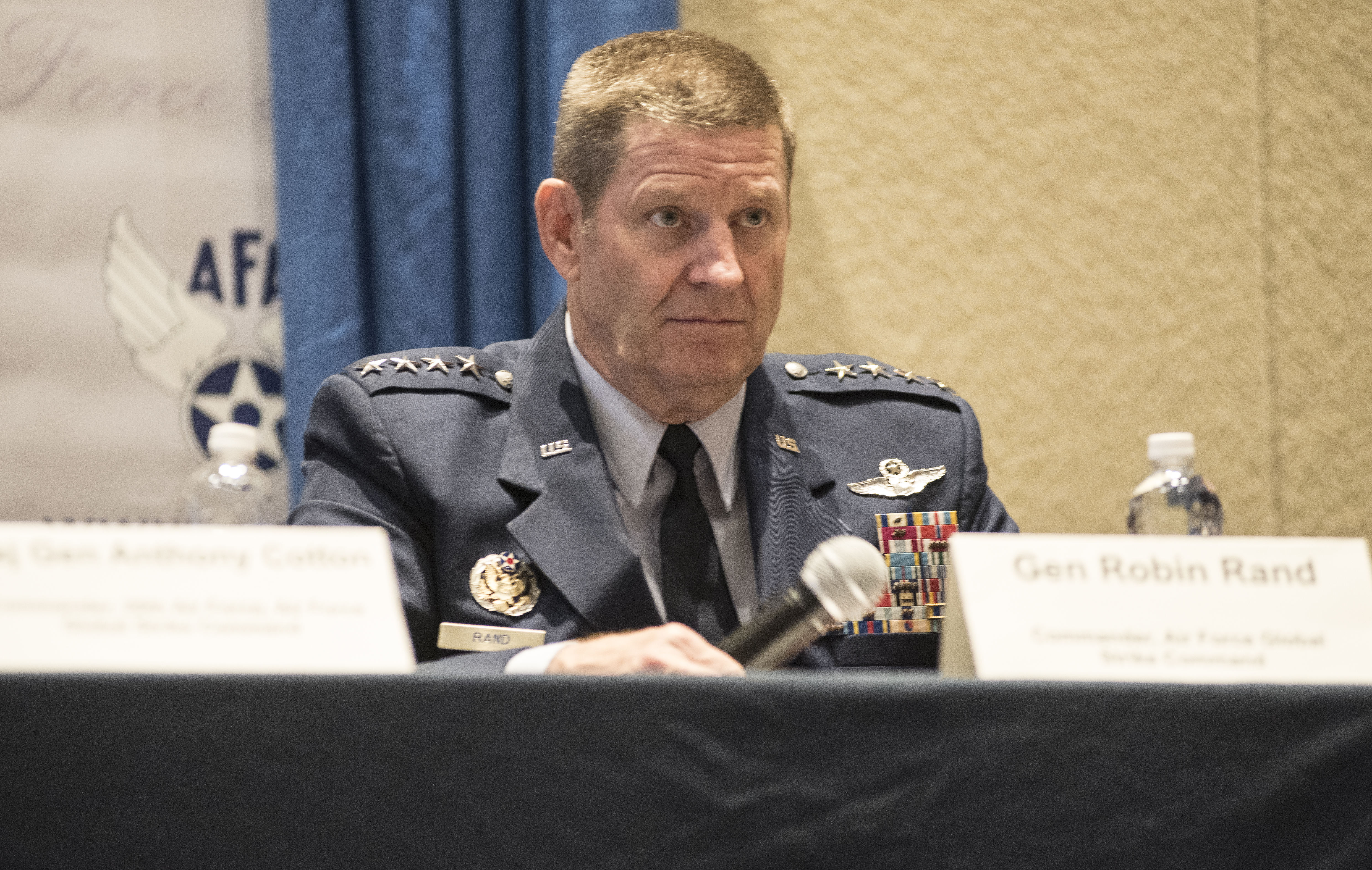
Gen. Robin Rand, commander of Air Force Global Strike Command, said modernizing the current GBSD is necessary in a "crazy world" of proliferating nuclear threats. Staff photo by Mike Tsukamoto.
As Northrop Grumman and Boeing mature their designs for the Air Force’s Ground-Based Strategic Deterrent (GBSD), the focus will be on producing a Minuteman III replacement system that is adaptable and affordable.
“We are in a crazy world” of proliferating nuclear threats, Gen. Robin Rand, commander of Air Force Global Strike Command, said during a strategic deterrence panel Monday at ASC17. While the current ICBM fleet is “pretty damn effective” as a deterrent, Rand said its modernization is necessary to meet today’s global threat landscape.
Deterrence is all about “projecting credibility,” said Maj. Gen. Anthony Cotton, commander of the 20th Air Force, on the same panel. “As soon as you lose that credibility, deterrence goes away.” In order to “maintain that credibility,” Cotton said the service needs to develop “an even more lethal weapon system” in the GBSD.
The case for modernizing the ground-based leg of the nuclear triad needs to be made because as recently as 2009, the Obama Administration engaged in “a very serious discussion about eliminating the ICBM force,” retired Maj. Gen. Roger Burg told the audience. Burg is the president of Burg O’Malley Consulting and a former commander of the 20th Air Force. The importance of a ground-based deterrent was confirmed at that time, he said, when Obama “decided to retain the ICBM force,” Burg said.
The problem is that the Minuteman III system is “no longer cost-effective to maintain,” said Carol Erikson, Northrop Grumman vice president for GBSD. It also has real limitations in its “ability to fully incorporate today’s technology as well as adapt to future threats.” In the new GBSD system, the Air Force needs “something more capable, more flexible, and more affordable,” said Frank McCall, Boeing’s head of strategic deterrence.
Whereas the Minuteman systems were designed to respond to a single nuclear-armed adversary in the Former USSR, McCall said, “We now face multiple nuclear-armed adversaries with growing capabilities and differentiated capabilities across the globe.” For this reason, and because the Air Force expects GBSD to last until 2075, a new ICBM system must be designed to answer “a diverse set of threats and a set of threats that will evolve over time in ways that we can’t fully predict.”
The contractors believe that open systems architecture and advanced modeling will show the way forward on GBSD. The Air Force has been “really visionary in the use of model-based systems engineering and the application of that to GBSD,” Erikson said. McCall agreed and said that open architecture is key to delivering “the ability and insight necessary to evolve the system” to meet as-yet-unspecified future threats.
He thinks such an approach could enable the Air Force to “break the cost curve” of a program that has been estimated to cost as much as $85 billion—for research and development, procurement, and military construction—and at the same time delivers a nuclear deterrent that demonstrates “increased performance over time.”